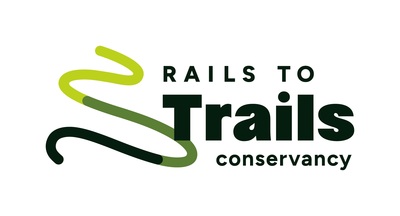Rails-to-Trails Conservancy’s analysis finds that 46% of Safe Streets and Roads for All Construction Grants Address the Need for Traffic-Separated Walking and Biking Routes
WASHINGTON, Feb. 3, 2023 /PRNewswire/ — This week’s announcement of grantees under the federal Safe Streets and Roads for All program reinforces a growing trend nationwide, says Rails-to-Trails Conservancy, the nation’s largest trails and active transportation advocacy organization—that investing in connected walking and biking infrastructure, separated from vehicle traffic, is a critical strategy for stemming the tragic trend of fatalities and serious injuries among pedestrians and bicyclists, a social crisis that is quickly worsening and has disproportionately impacted communities of color and low-income communities nationwide.
In particular, construction grants funded under the program illustrate the ways that communities are integrating traffic-separated walking and biking infrastructure, including multiuse trails, protected bike lanes and sidewalks, into their strategies to address rising fatality and injury rates of bicyclists and pedestrians, while also providing equitable transportation access and reducing greenhouse gas emissions by encouraging more people to walk and bike instead of drive. Nearly half of all construction grants (46%) funded projects that include elements that provide traffic-separated connectivity and nearly all the grants (94%) account for the needs of bicyclists and pedestrians, the fastest growing segment of traffic fatalities and injuries.
“Since the Bipartisan Infrastructure Law passed in late 2021, we’re seeing a significant shift in how communities are prioritizing the needs of bicyclists and pedestrians in their grant applications and how the U.S. Department of Transportation is supporting that shift in their funding decisions,” said Kevin Mills, RTC’s vice president of policy. “They’re validating what we’ve long championed—that it takes both more money and strategic focus to build active transportation infrastructure that addresses critical issues communities are facing. We need to leverage existing infrastructure with strategic investments in connectivity to create safe walking and biking routes that are separated from traffic and connected to places people want to go. That’s what it takes to reduce traffic fatalities, provide equitable access to economic opportunities for everyone, whether or not they drive, and to enable more people to swap a car trip for active transportation.”
Several of the Safe Streets and Roads for All grantees stand out as examples of places where this federal funding will have an outsized impact because of the investment in connectivity of traffic-separated active transportation infrastructure. Providence, Rhode Island, received $27.2 million to construct the Urban Trail Network, providing “last mile connections to residential, employment and cultural activity centers between the city’s 25 neighborhoods while significantly reducing fatal and serious crashes for vulnerable road users.” Atlanta, Georgia, received $30 million for protected bicycle and pedestrian facilities that connect the Southside of Atlanta and the Southside BeltLine trail to Atlanta’s downtown—addressing the void in active transportation infrastructure connecting north and south through the city and providing the necessary facilities to encourage more people to safely walk and bike instead of drive. In Maryland, $7.5 million will be invested in improved safety of trail crossings alongside bicycle and pedestrian education programs, addressing barriers to trail use that exist in this region, especially in underserved neighborhoods reached by the Capital Trails Network, one of RTC’s TrailNation™ projects.
The program, funded through the Bipartisan Infrastructure Law, provides $5 billion over five years for comprehensive safety action plans and for planning, design and construction of projects to reduce traffic fatalities and injuries. This first round of funding totaled $800 million in planning and construction grants.
“These awards are encouraging as they signal a deeper understanding that how we invest in walking and biking infrastructure makes a significant difference for the safety of our communities and the health of our planet,” said Mills. “While these competitive multimodal grant programs have proven to be an important funding source for trail and active transportation networks, they aren’t enough if communities can’t plan around these resources for the long-term. This is why it’s essential that Congress fully fund the Active Transportation Infrastructure Investment Program and sustain and grow it over time to provide the dedicated funding necessary to bring safe, connected active transportation infrastructure to every neighborhood.”
The Active Transportation Infrastructure Investment Program (ATIIP) is a new program that provides dedicated funding for the planning and construction of safe and connected active-transportation networks and long-distance spine trails. The program was authorized in the Bipartisan Infrastructure Law and received its first appropriation in the Fiscal Year 2023 federal funding bill. RTC, Congressional champions, and partners across the country are continuing to advocate for full program funding in the FY 2024 federal budget. Learn more about the demand for trails, walking and biking infrastructure and available federal funding at railstotrails.org/policy/funding.
Rails-to-Trails Conservancy is the nation’s largest trails organization—with a grassroots community more than 1 million strong—dedicated to building a nation connected by trails, reimagining public spaces to create safe ways for everyone to walk, bike and be active outdoors. Connect with RTC at railstotrails.org and @railstotrails on Facebook, Twitter and Instagram.
CONTACT: Patricia Brooks, [email protected], 202.351.1757
![]() View original content to download multimedia:https://www.prnewswire.com/news-releases/new-federal-grants-elevate-trail-and-active-transportation-systems-as-essential-infrastructure-in-addressing-traffic-fatalities-301738600.html
View original content to download multimedia:https://www.prnewswire.com/news-releases/new-federal-grants-elevate-trail-and-active-transportation-systems-as-essential-infrastructure-in-addressing-traffic-fatalities-301738600.html
SOURCE Rails-to-Trails Conservancy



